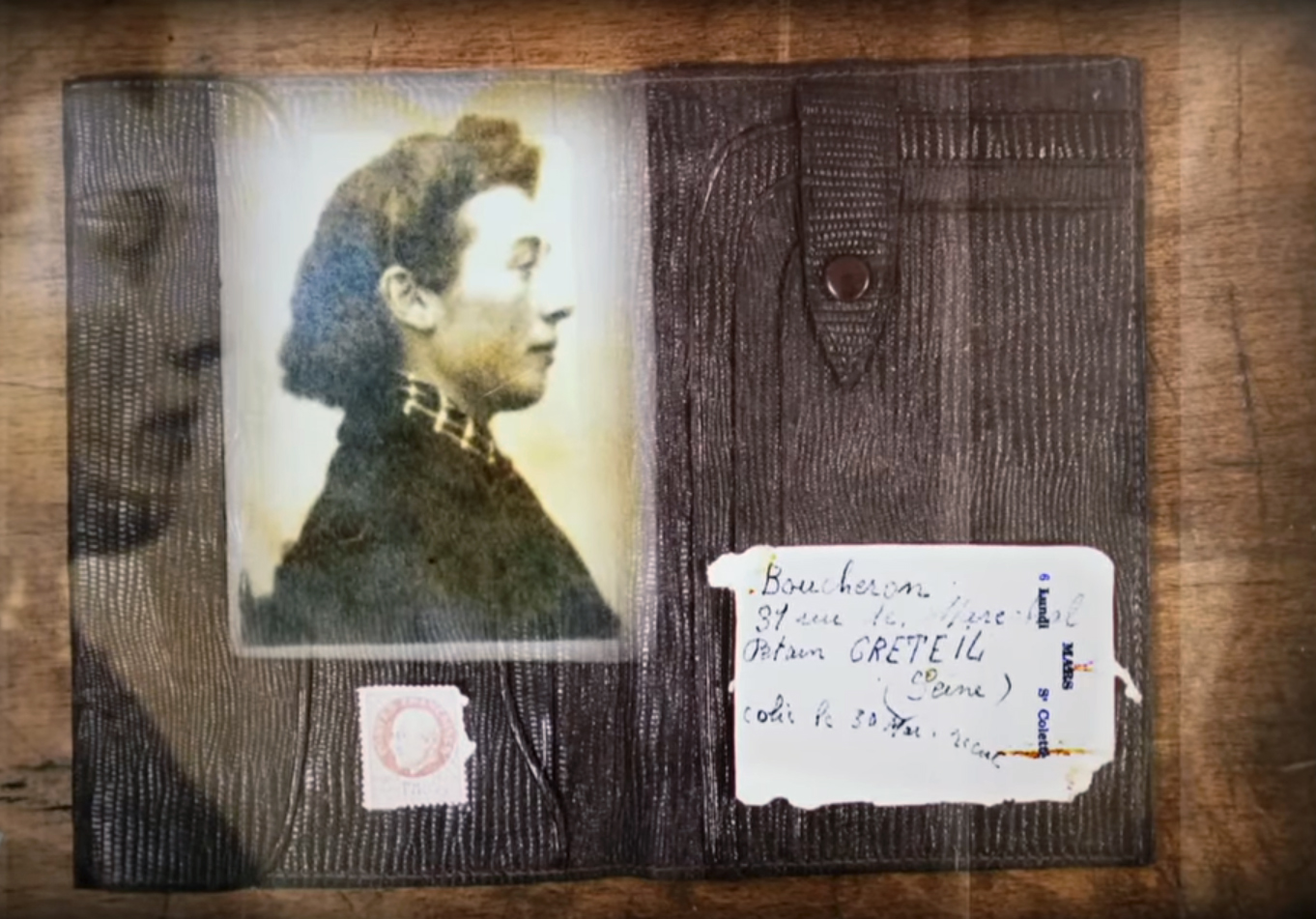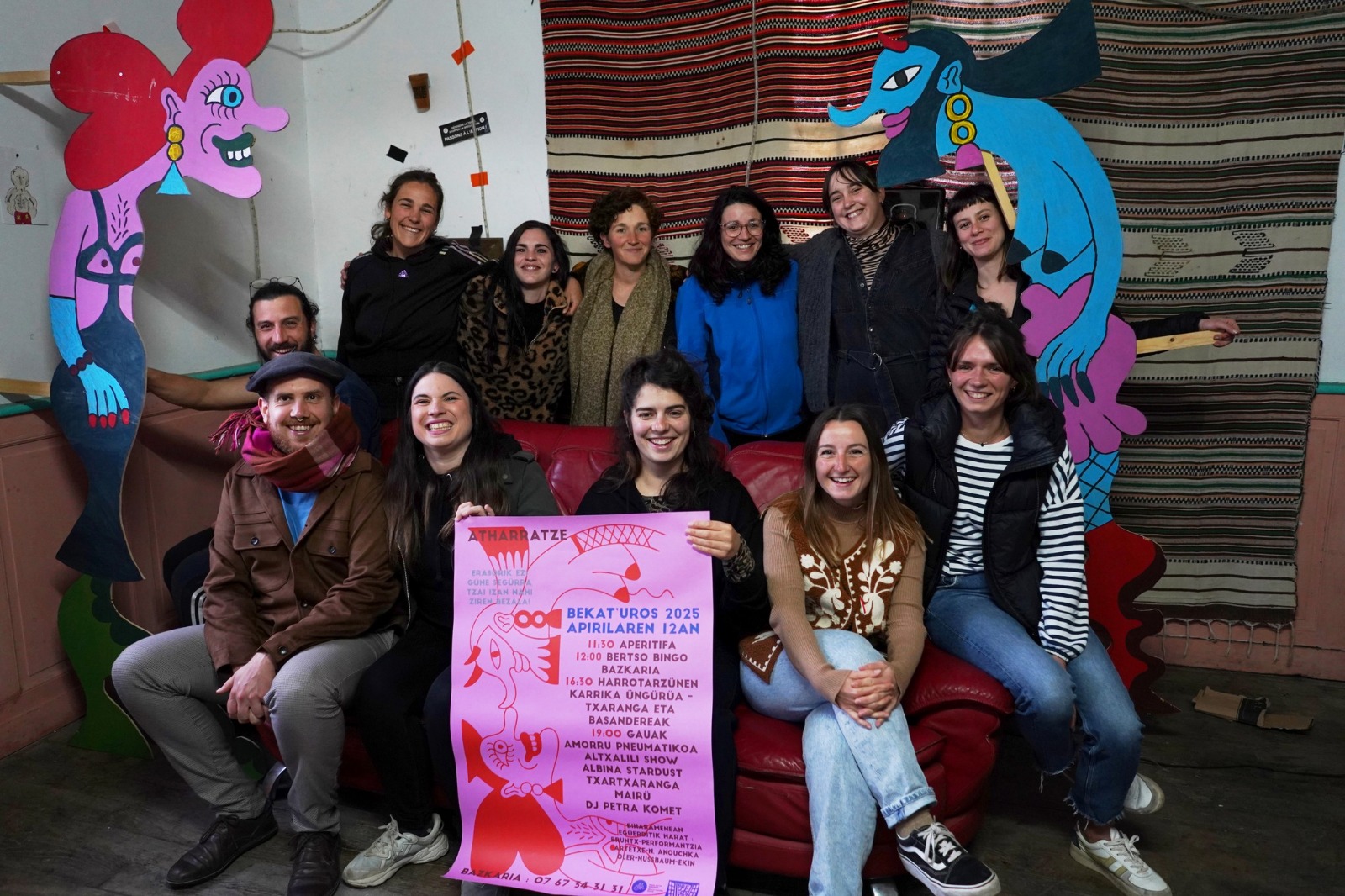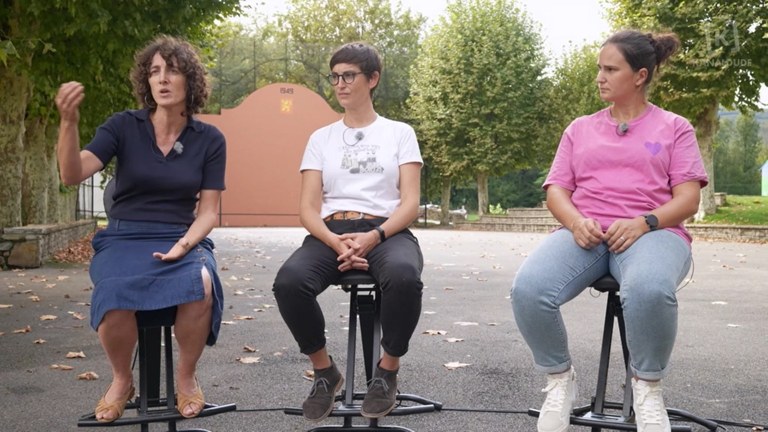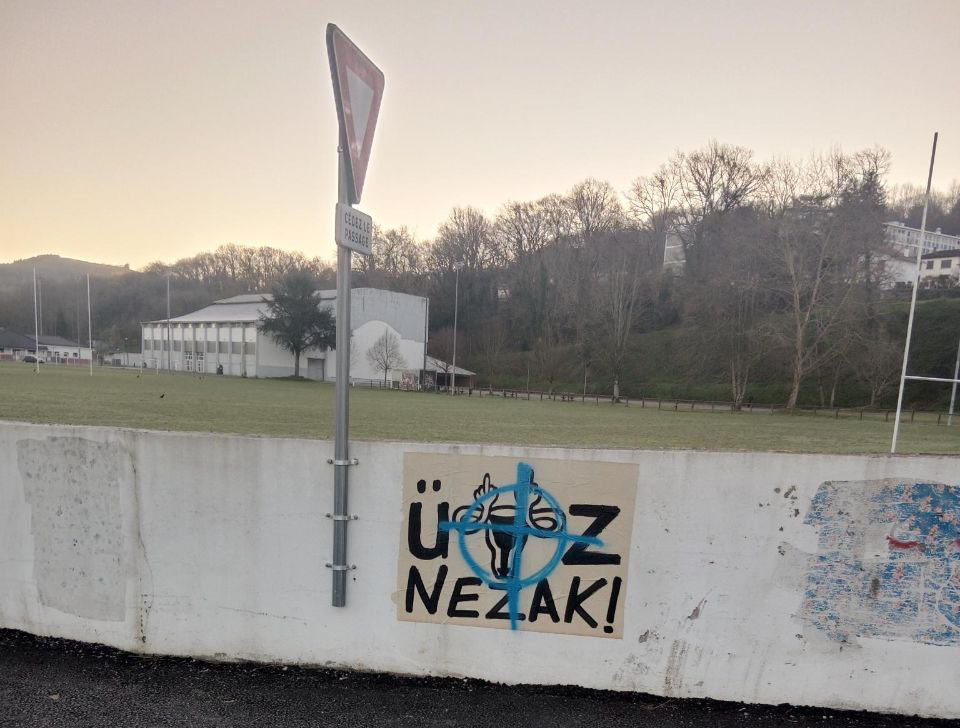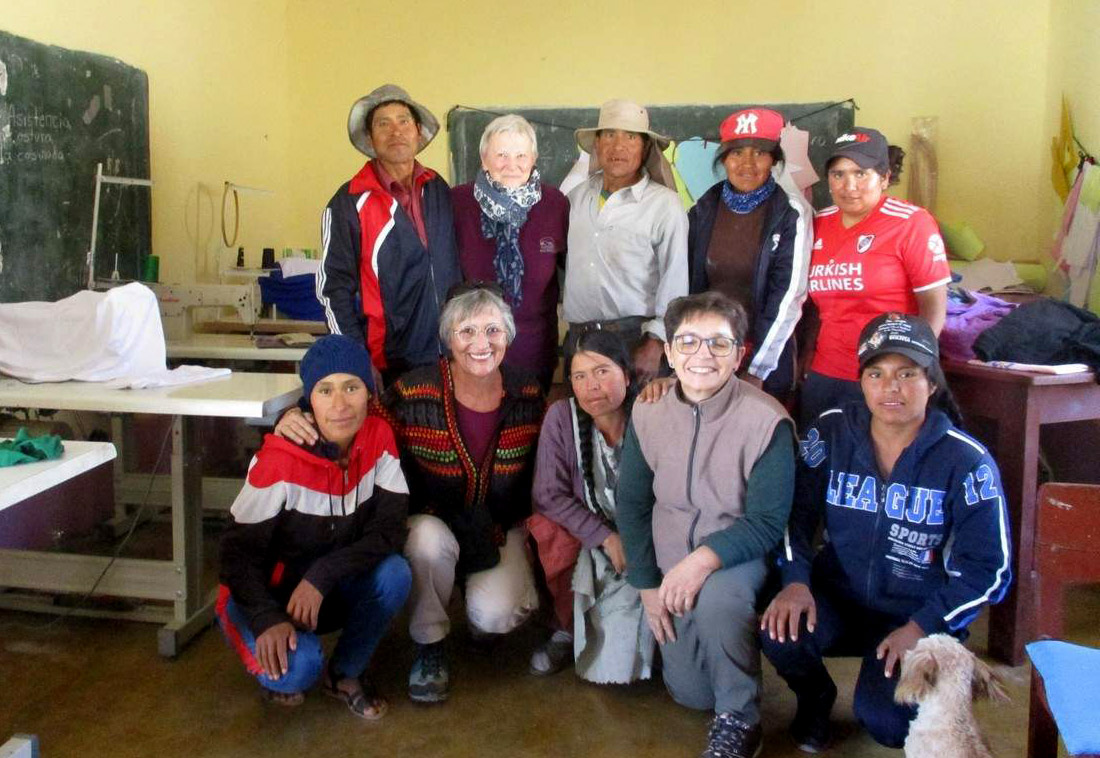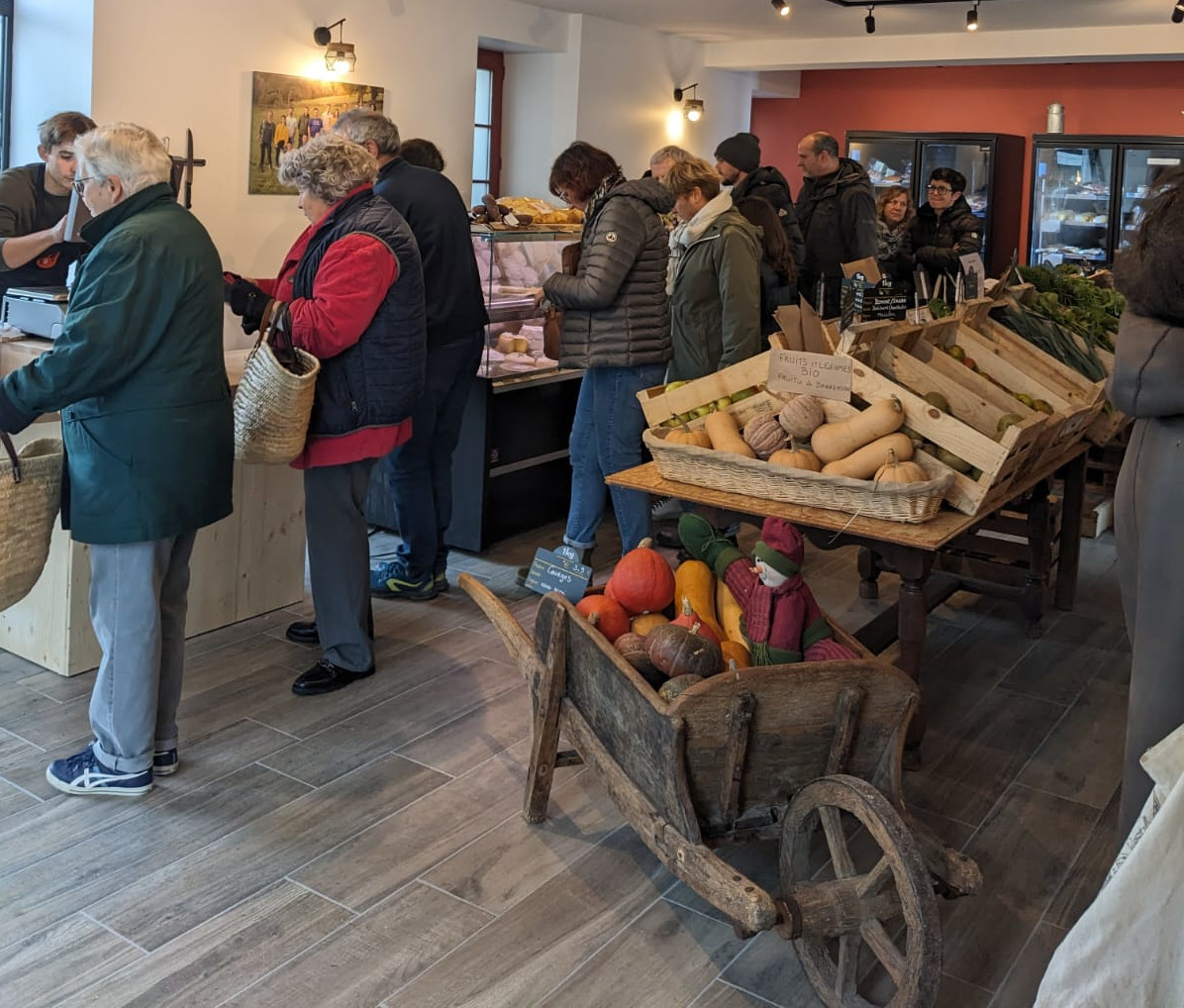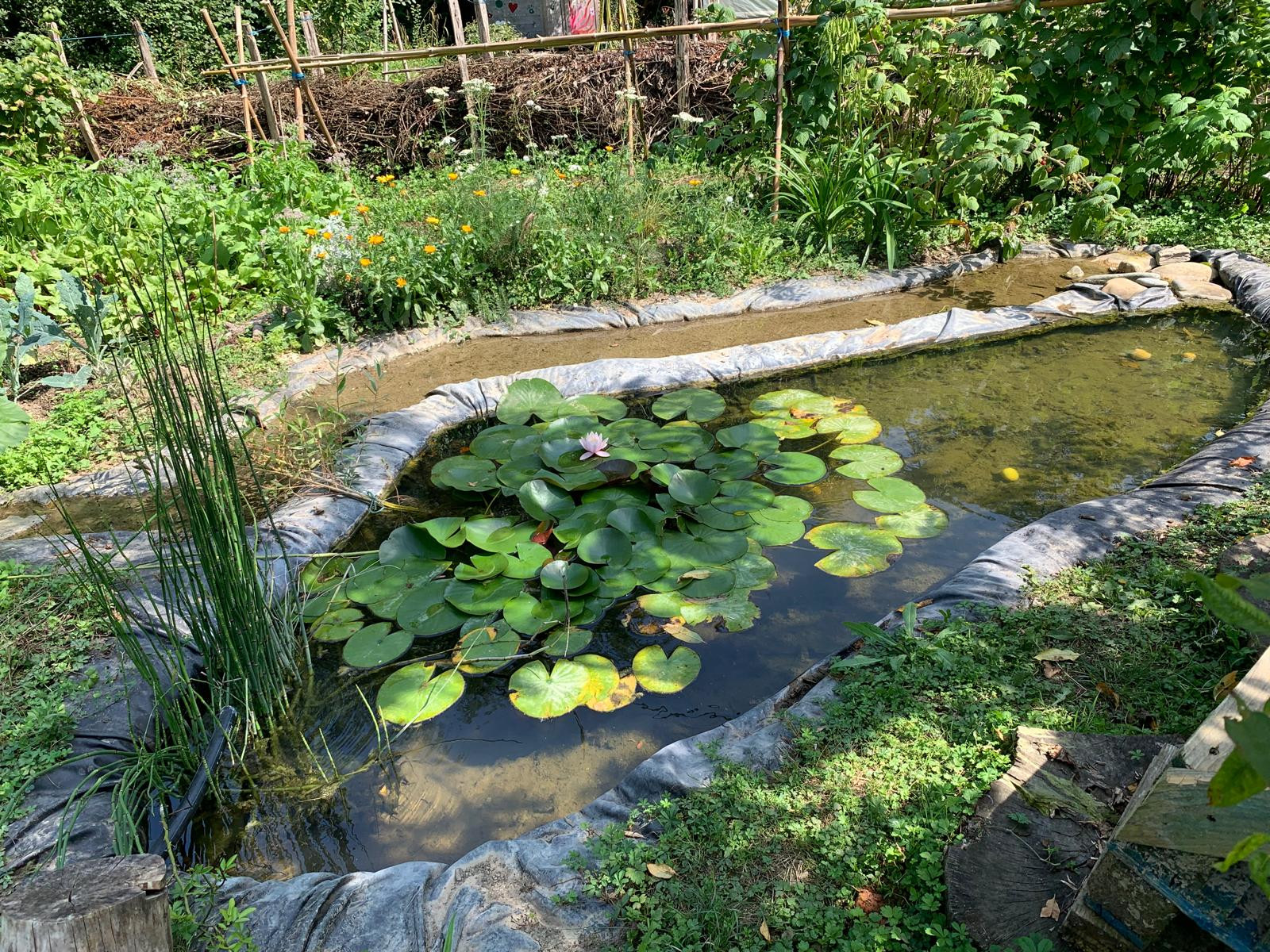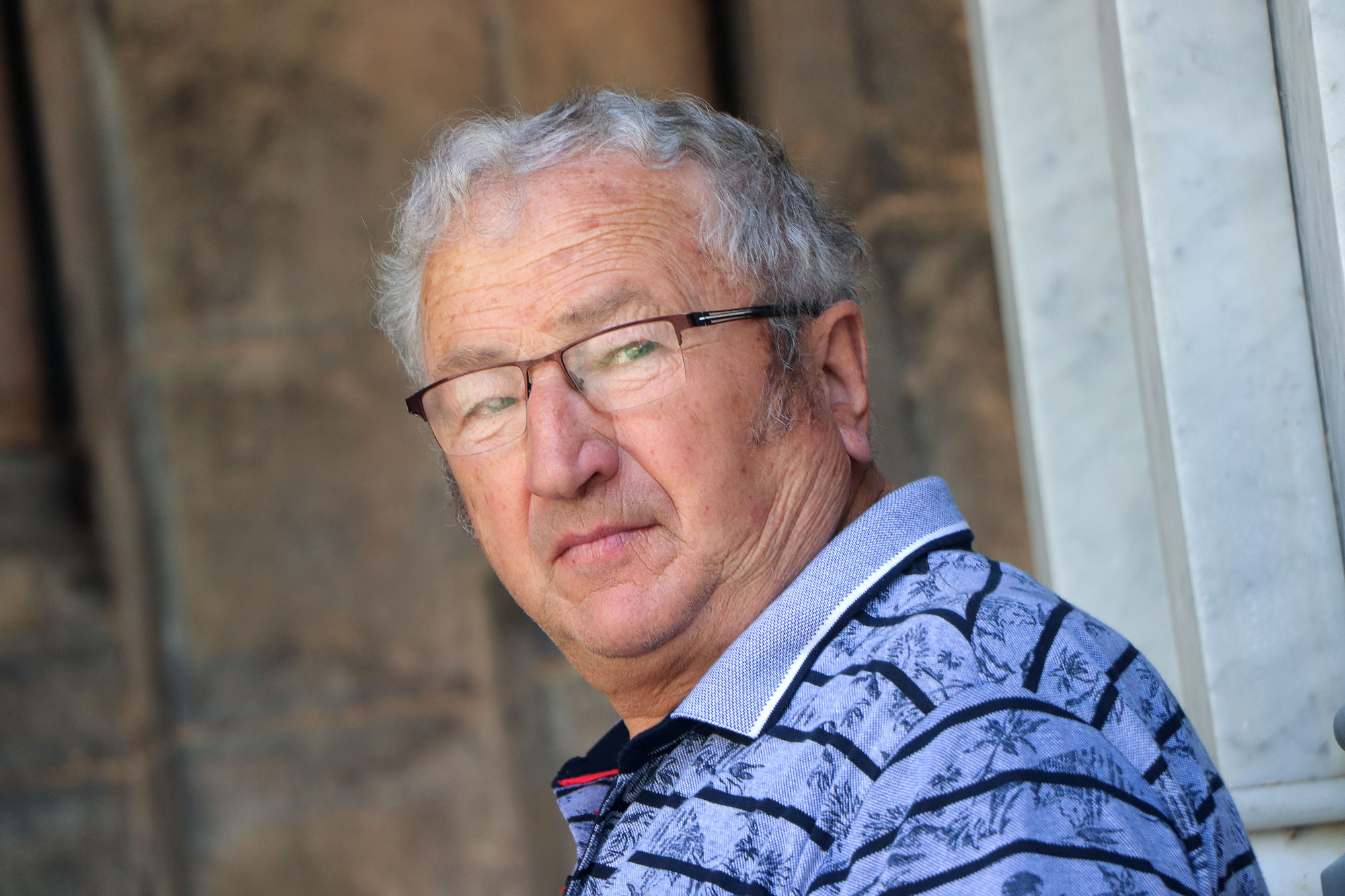"Nationalists also take official history, often, as if it were real."
- Altzai, 1950 He currently lives in Bildoz, portrayed. He learned the job of electronics as a young person. The founder of the Botza de Zuberoa worked for twenty years as a radio technician. He was secretary for ten years of the Ikastola Epherra de Sohüta. Moreover, he was the manager of the Euskadi Information publication for eleven years. Diverse people. Today, he lives worried about history. We have spoken about the historical novel Matalaz ez zen zaldiü (Editorial Herexak). The plain people of Zuberoa rose up against the nobles in the 17th century. What did he get up for?
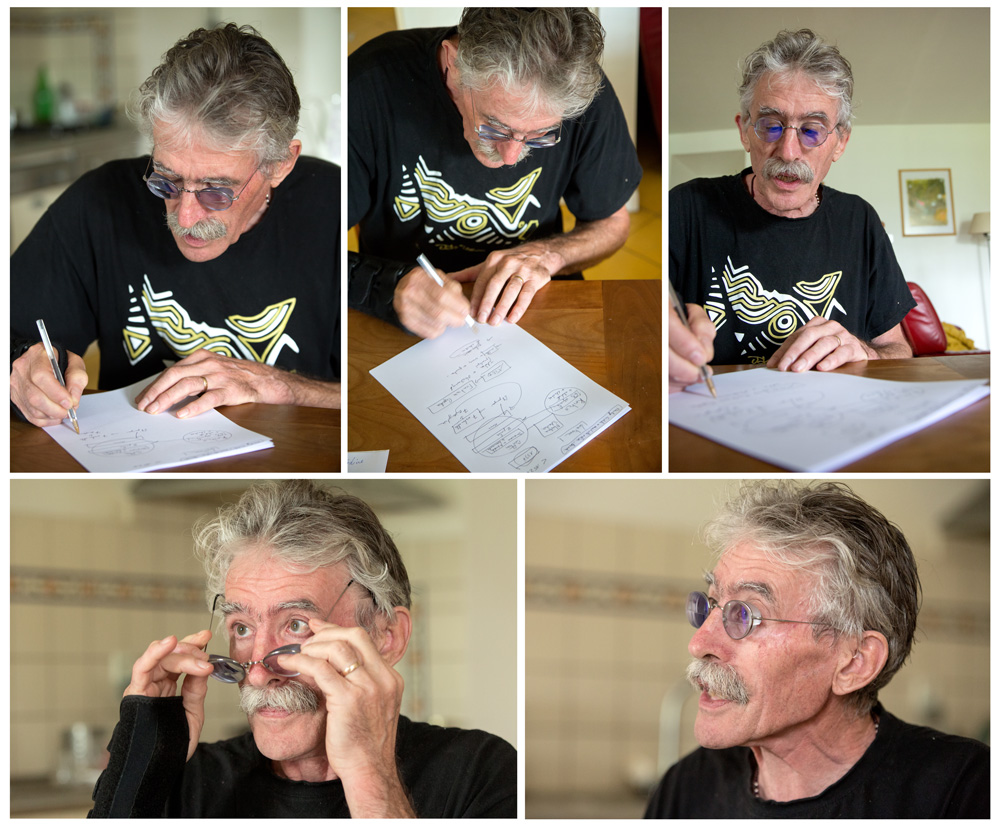
He's researched Zuberoa's story, but he's not a historian. However, you are focused on the files.
I'm not a historian, I'm not a studio or anything else. When I was 64 -- when I was in the toilet -- I wouldn't even begin to investigate the story. That's why I've done, in a way, this historical novel. I've read a lot about Zuberoa's story, and I've realized they're different versions. Most of the time, historians repeat what others have written before, not everyone, of course. The history of Matalaz (Bernard Gohienetxe, Matalaz) and Manex Gohienetxe Davant.En are excepted, among others. Mitikile ?-Maule-Lextarre, 1661) I realized there were many contradictions. We know that zuberotars rose, but the reasons are not clear. What did they get up for? I have searched both the archives of Pau, Bordeaux and Tarbe; I have also visited Auch, of the department of Gers, and the libraries of the convents.
If the title has not appeared on horseback, it bears the name: The debt of the large and the People of the small in the archives. What was the reason for the Sulatins' uprising?
“Did Matalaz have the awareness of the people? Yes, I think so. The inhabitants of Mitikil were kidnapped, arrested and detained in their village.”
It's hard to explain the story... I have seen that the farmers in Zuberoa lived well, or so I believe. There was no hunger. Clearly there were poor in parishes, but in general, as seen in the farmers’ wills, they lived well. There was money in Parliament and the city weddings were quite copious. The question is as follows: The senior bishop of Oloron, Arnaud III, spent 40,000 pounds, but received 80,000 pounds. That is the debt of the big ones. Mayti's family was part of the lords and condes of Gramont, who were great. In this matter, Jean-Armand Peyrer is confused, the well-known Treville. There is a matter between nobles, the so-called Detxema (tax), who did not manage it properly. It was a scam. In the seventeenth century, the French bishops cheated the King's dechema. For example, in 1649, the nobles took the dechema of the plain people – most labourers – 140,000 pounds, but the use of 80,000 pounds does not appear clearly in the books. In 1659 the matter was examined in the Bordeaux Parliament. In 1660, however, there was a revolt in Zuberoa.
Among them was Beñat Gohienetxe Matalaz. Who was Matala?
He was born around 1600, no specific year is known. He was in Bordeaux, did theology at university and apparently also studied law. Around the so-called uplifting, there are papers in the files, but there are many contradictions. There are clear things, but not all.
Matalaz had zuberotarra consciousness…
Did it have the awareness of the people? Yes, I think so. The inhabitants of Mitikil were kidnapped, detained and imprisoned in their village.
He defended Matala.
It's not easy to define them all. Common land management was very important: the taxes on forests, the management of forests, roads and lands...
A proverb by Allande Oihenart reflected that time: “Do not eat the bran, do not sleep” / “Le chien ne mange pas son mais il ne laisse pas les poules en profiter”.
It is the attitude of the noble, who want to take the place of the chickens for themselves, leaving less and less for the citizens. However, many interpretations, different readings can also be made.
For example, the last words of Matalaz: “Perhaps the real Xibetarrak, the real eüskaldüns, will rise up a egün to drown this French piojera.” Benito Lertxundi has sung “the murder of the tyrants…” and the people have turned into “the murder of the tyrants…”.
The same thing. It is also interesting to clarify that, as Jean Louis Davant has written. How a phrase is understood and what can be converted, and how it has been used in a different way in the last 50 years...
The people stood up anyway.
“Iban is the character I have lived, the one who deals with the files, the one who talks about curiosity, deceit, the main character”
The most important thing for me is that the people were up, which I found in the archives. The town was on the bridge of Ündurian, and there have been little more than a hundred horsemen of the king. The families did not recover their bodies, they did not even have permission to bury in the churches. Papers say they had the opportunity to hold a mass without a dead body. In other words, in Sohüta, 400 bodies were thrown into a pit and 150 other prisoners were taken. In addition to how terrible that is, my wish is for you to find out that the corpses are somewhere.
It's a historical novel. Iban is the bearer of the string of the book, the character of today. Step back as you study history. It goes from January 2015 to 1300 years. Who is Iban?
Iban is the main character I have lived. It's dedicated to archives with curiosity and also to stupidity. I'm not able to write about myself and I've created this character to explain my thoughts. I gave Iban an obvious personality.
It mentions the time when the ikastola de Sohüta was founded. You've joined the resistors of the time and the present day of Matalaz. However, you're critical.
I wanted to contrast the official history and the memory of citizenship in different passages. For example, a letter shows that Matalaz opposed the Protestants, but nothing appears in the documents. It's the official story, brought as the Mendaz Letter of the King back then. Maleruski, not only the Franciscan, but also the patriots here often regard “official history” as true, as if the official were real. I don't really get this. The old nobles had the power, the story they managed, they wrote that letter, it was their conception, but the letter was written against the people. It is therefore not good that an abertzale now considers that this letter is good and reliable. He's not a scientist. But unfortunately, the official history is often written in this way.
Nationalists also have to take care of telling the story...
They do not do it to their liking, but because of indifference, because of ease or laziness to investigate…
In the book he mentions Joseba Sarrionandia. They seemed to know her.
It's no use to me. Joseba Sarrionandia was here at one time, studied or met Zuberoa. I guessed this passage to say: Zuberoa has been an occupied town, many zuberotars have been domesticated and assimilated by the ghost language, we have suffered a great submission here. Many, not all, have participated, voted and accepted the wars in favour of France.
The new spirit is growing.
Yes, for example, last year they offered the Dantzak’Haka show at the hand of Barkoxe’s Etxahun association. A kind of resistance had manifested itself. In this work appeared the peasants who recently left the Battle of Roncesvalles and launched against the CRS in a “Afera de los patos”. Matalaz's spirit was explained in a similar way.
The other Basques of Zuberoa are manex. Do we understand Manexo Zuberoa?
“In Sohüta, 400 bodies were thrown into a hole and 150 other captive citizens were captured.”
I ask him, on the other hand, is it the Sulatins who understand the Manex? It's Eneko's Manex word, which had not been heard until 1950. At that time there was a decrease in the Basque being and the Basque being. A kind of fantasy linked to the decline of the feeling of being Sulatino and Basque: we, the zuberotarras, are better than others, we sing and dance better… Of it, the other Basques are manex, and not only those beyond the Bidasoa, all, also those beyond Pagola. So you have a false pride in many, not all. However, among those who use this word manex there is no more Euskaldunes, less and less. Whoever uses it questions “How do you write the manex?” He can't write. You've heard it and it shows some sort of superiority. I don't want them, Prefect.
When speaking of pastoral care, it is inevitable to mention Etxahun-Iruri [Pierre Bordazarre].
Etxahun-Iruri has been very important. In the postwar period of 1944. After the World War, the influence of coldness accelerated here. And the Algerian War is accelerating even faster, after 1958. The Basque feeling descended. Etxahun-Iruri worked another line. Among other things, the theme of the song Agur Xiberua represented a change among the inhabitants of Zuberoa.
In the pastoral ministry, Etxahun-Iruri gave a person from Euskal Herria the role of character principal.Tambialso was very
important. Pastoral care has not been one of the best, but it has been important to have an idea of a farmer, to remember the time of Pitrau and its context, to be played in his people. When Pitrau died I was 24 years old, I didn't know him as a farmer. He was a left-wing farmer, that was his specialty.
I would like to comment on that pastoral care.
[It's reluctant...] In the pastoral ministry, the Minister of Paris and the Chamber of Agriculture of Pau agree in the opposition. But Pitrau also opposed the local peasants or the militants, who also opposed him. There was something that you didn't see in pastoral care. You know, it's not easy... The pastoral care ends up making a mention of the Monsanto Company, making a little of Charlot, therefore, in the form of comedy, not in treason. A militant who dies in the age of 46, had that to end? The final seemed like La Petite Maison dans la prairie, a bit yellow or pink...
Today pastoral care is strong.
Since Etxahun-Iruriz, especially, the Pastoral Care has become popular, narrated lyrical. Songs and dances have been worked hard, players and new organizers are working at the same time. That is, people do pastoral care once every fifteen years, and another generation follows it, so it's changing.
However, today anyone can be a player in pastoral care. Is that good? Will it be bad?
What can anybody get in? Yes, of course. There is a repentance from one of them, because also participates who does not know Euskera. It is regrettable that those who do not know Euskera are singing. That is why we say that it is very important to learn Basque, to work in pastoral care without knowing Basque is a contradiction, it is our contradiction. But change will also come there, or I would like to. And it's that, at the same time, there are a lot of people who are engaged, the movement of the people is big, between 200 and 300 people are moving, 100 people on the stage, another 100 around, the organization is huge.
Finally, your book is double, also written in French. Si Matalas ne s’était pas montré à cheval. Why?
Here are those who write about the history of Zuberoa, do no more than in French, for them I have made the translation into French, also for the reader, for those who do not know Euskera. In the book there are many zuberotarras mentioned that don't speak in Euskera, that sometimes repeat too many nonsense, so I wanted them to be understood as well. The truth is that I have made a bad translation, some passages are heavy, therefore, the first and the last.
Has the book been echoed?
Yes. The Sulatins, as well as some Basques who live outside here, have written to me or have called me on the phone. I was told that they liked it. I'm happy.
Matalaz ez balitz zaldiz agertü eleberria bitxia da, bai edukiz bai formaz. Allande Etxartek historia arakatzeko paleografia ikasi du, baita ziria erabiltzen ikasi ere. Zer da paleografia?
Paleografia da antzinako idatzien deskribatzeko metodoa. Artxiboetan badira idazmolde zaharrak, gehienak idatziak dira. Notarioek, lege gizonek, idazkariek, badute beraien idazmolde berezia, denak eskuz idatziak dira, anitz kopiatuak ere bai, beraz, eleen laburbiltzeak, kontrakzioak erabiltzen dituzte, eta horiek behar dira ikasi. Bi urtez egin nuen Paueko artxiboetan formakuntza, eta orain talde bat biltzen gara hilabetean behin, entseguak eta ariketak egiten ditugu, kontrakzio horiek gogoz ikasi behar dira, zorrozki edo kasu handi emanez.
Ziria eskuetan ari zara. Liburuan hori ere ageri da. Xehelaria zara.
Herexak edo aztarnak xerkatzen dituena da herexalaria. Historialaria baino herexalaria naiz, beraz. Xehela makila txiki bat da, ziri berezia. Hurritza da ziri sentsiblena. Ziriaren edo xehelaren bitartez sentitzen da lurraren irradiazioa. Erradioestesista edo zahori gisakoa naiz, irratian aritua naizenez hori ere landu dut. Bilaketa berezia da. Konparazionera, ura xerkatzea oso zaila edo gogorra da. Urak bost edo zortzi metrotan barna daude.
Azaldu iezaguzu zure esperientzia.
2014an suertatu nintzen Ahüzkin, Sohütako gizon batekin, bere ziriarekin ari zizun. Elektrika eta gailu lodiak zituen. Nik banuen sentimen gisako bat lehendik, baina orduan nabaritu nuen sentsibilitate hori gehixeago, pertsona denek ez dute dohain hori. Lurrak memoria atxikitzen du eta horren xerka joan behar duzu, irradiazioak kausitu ahal dituzu. Hiru hilabetez aritu naiz, aztarnak atzeman ditut. Duela 2000 urte jendea muinoetan bizi zen, mendixketan, etxebizitzak han zituzten eta beherean, ehiz tokiak edota basoak zeuden. Geroago ikasi zuten zuhaitzak kentzen eta bizitokiak beherean eraikitzen, ordokietan.
Zuberoako ohiturei buruzko bi liburu ditut gogoan. Batek XX. mendean aritu izan diren 180 dantzari eta soinulari aipatzen ditu. Haien artean, emakumezkorik ez da agertzen. Besteak, pastoralei egiten die errepasoa eta hor emakumeak aipatu aipatzen dira, baina omisio esanguratsuak... [+]
Martxoak 8an egindako pintaketak gainetik margotu dituzte ikur faxistekin Zuberoako hiriburuan. Horren aurrean elkarretaratzera deitu dute, astelehenean.
Zubiak eraiki Xiberoa eta Boliviaren artean. Badu jadanik 16 urte Boliviaren aldeko elkartea sortu zela Xiberoan. Azken urteetan, La Paz hiriko El Alto auzoko eskola bat, emazteen etxe baten sortzea, dendarien dinamikak edota tokiko irrati bat sustengatu dituzte.
I have recently worked in class on Etxahun Barkox’s beautiful and touching cobla. The bad guy! The afflictions of the house began because of the creation of the “praube with beauty”, but in seventeen years she had entered the sea of misfortune, having to abandon the girl... [+]
Maule, 1892. Eight women from the Salazar Valley headed home from the capital of Zuberoa, but on the way, in Larrain, they were shocked by the snow and all were killed by the cold. Of the eight, seven names have come: Felicia Juanko, Felipce Landa, Dolores Arbe, Justa Larrea,... [+]











